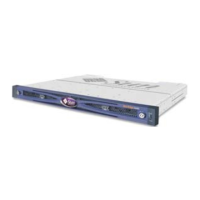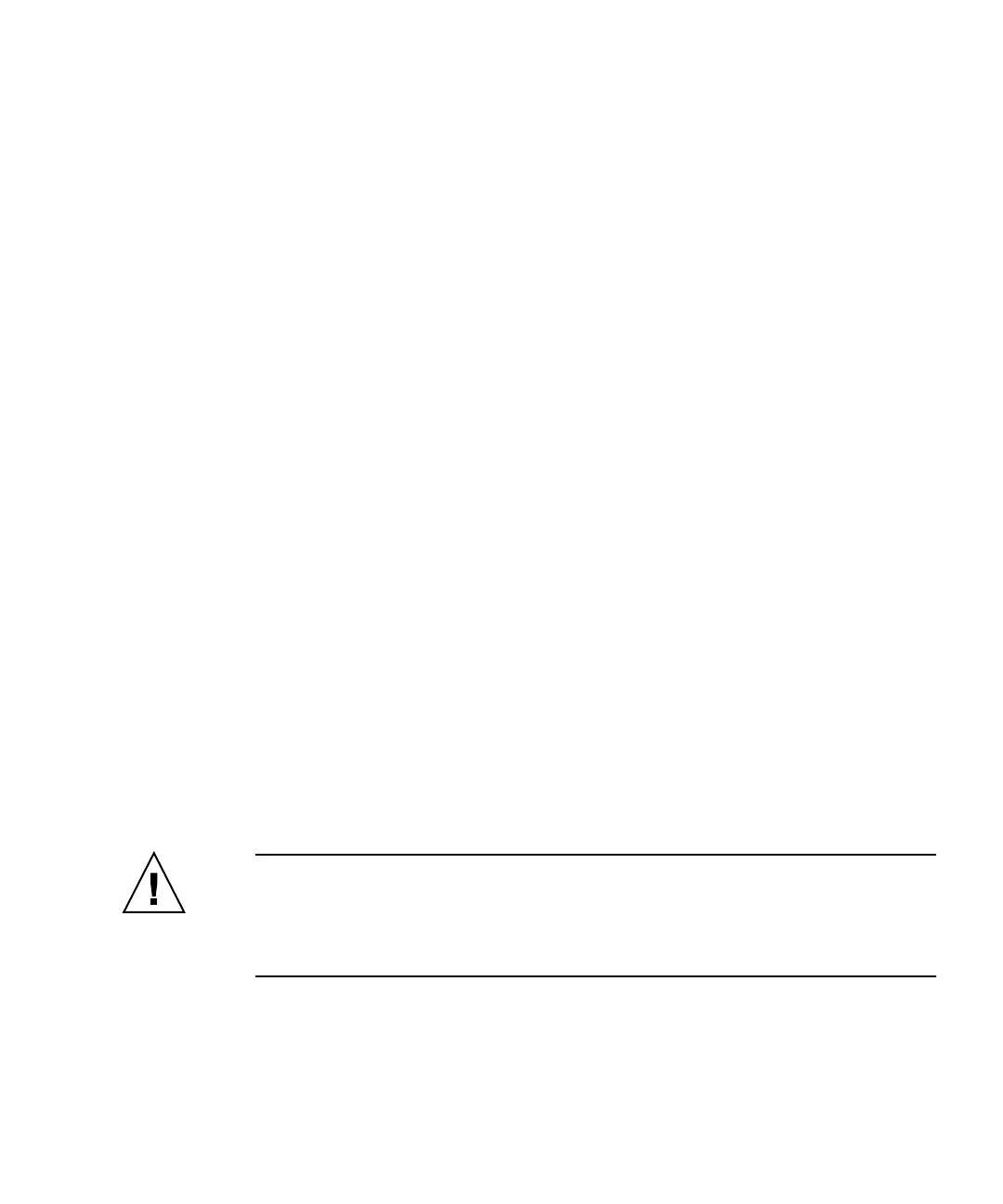Appendix B Using a Standalone JBOD Array (Sun StorEdge 3510 FC Array Only) B-15
After hardware replacement, a problem can usually be considered solved if it does
not resurface during a period equal to twice its original frequency of occurrence. For
example, if a problem was occurring once a week on average before a potential fix
was made, running two weeks without seeing the problem again suggests a
successful fix took place.
Troubleshooting hardware problems is usually accomplished by an FRU isolation
sequence that uses the process of elimination. Set up a minimal configuration that
shows the problem and then replace elements in this order, testing after each
replacement until the problem is solved:
1. Replace the cables.
2. Replace the SFPs.
3. Replace the drives.
4. Replace the HBAs.
Often you can also find out what does cause a hardware problem by determining the
elements that do not cause it. Start out by testing the smallest configuration that
does work, and then keep adding components until a failure is detected.
To view error messages reported by JBODs or expansion units, use any of the
following:
■ Message log in the operating system
■ For Solaris, var/adm/messages
■ For Linux, var/log/message
■ For Microsoft Windows, use the event viewer
■ Sun StorEdge Configuration Service event log
■ Sun StorEdge CLI event log
■ For expansion units, the RAID firmware event log
For more information about replacing the chassis, I/O module, or controller, refer to
the Sun StorEdge 3000 Family FRU Installation Guide.
Caution – When you rotate or replace drives, make sure that:
- All I/O is stopped.
- The “Periodic Drive Check Time” setting in the firmware application is set to
disabled (this is the default setting). This prevents automatic drive rebuild, which is
not recommended for live systems or troubleshooting.
To disable the Periodic Drive Check Time:

